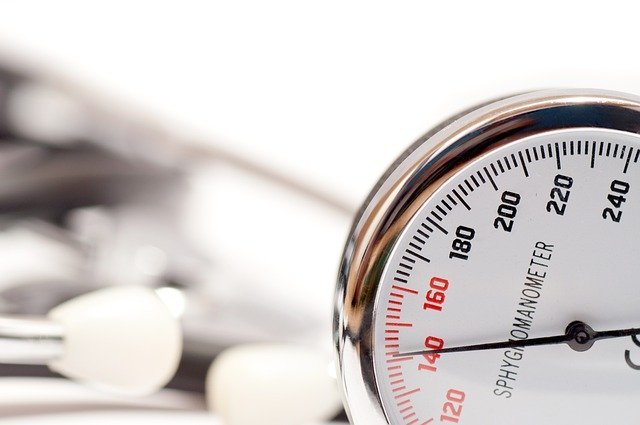
Blood pressure that goes down when you stand up is associated with frailty and falls in older people, according to a new study that advocates more testing.
The research, published Monday in the Journal of the American Heart Association, delved into the relationship between geriatric patients and orthostatic hypotension – a type of low blood pressure that occurs when you stand up, sometimes causing you to feel dizzy or lightheaded.
The condition occurs in 5% to 30% of people over 65.
Researchers tested 168 men and women, with an average age of 81, who visited a geriatric outpatient clinic for cognitive or mobility problems.
Their blood pressure was continuously monitored as they were asked to lie down for five minutes, then stand up and stay standing for three minutes.
The study found dropping systolic blood pressure rates had the strongest association with how frail the person was and the number of falls they had in the past year.
Systolic is the top number in a blood pressure reading, and diastolic is the bottom number. Frailty was measured by four factors: mobility, incontinence, cognitive function and activities of daily life.
The magnitude of diastolic blood pressure drop had the strongest association with a different set of frailty markers: unintentional weight loss, exhaustion, physical inactivity, walking speed and handgrip strength.
While low blood pressure isn’t necessarily a problem for healthy people, testing a geriatric person’s blood pressure drop rate could be a meaningful way to predict who is likely to become frail and fall, said Dr. Andrea Maier, the study’s lead author.
“Frailty is a major problem because it means you’re likely not able to continue to live independently and you’re likely to die in the coming years.
Knowing why frailty and falls occur is very important,” said Maier, a geriatrician and professor at the University of Melbourne and Vrije University in Amsterdam.
Low blood pressure in geriatric patients can be a sign of inadequate blood flow to other vital organs, including the heart and brain, she said.
“If you’re blood isn’t flowing and it’s hard to stand up, it’s a bit like the electricity has been shut off to the body,” Maier said.
“As medical professionals, we sometimes think about treating one organ and we forget that organs interact together, like a network.”
Dr. Jeff Williamson, who was not involved in the study, said the findings serve as a reminder that doctors need to keep a close eye on the subset of geriatric patients with orthostatic hypotension.
“You also need to be careful that blood pressure medicine is not contributing to this, although in the vast majority of people, that’s not the case, and it’s safe to treat their blood pressure to guideline level,” said Williamson, a professor of gerontology and geriatric medicine at Wake Forest University in Winston-Salem, North Carolina.
He also is chief of geriatric medicine at Wake Forest Baptist Health. Williamson was part of the writing committee for the most recent blood pressure guidelines issued in 2017 by the American College of Cardiology and American Heart Association.
He said the new study was limited by its design. “This is an association study that doesn’t say low blood pressure causes frailty. It just says frailty and low blood pressure walk hand-in-hand.”
Williamson called for future studies on which types of blood pressure medication – and what dosage – works best for frail geriatric patients with low blood pressure.
He’d also like to see research on whether moderate exercise and a better diet could help older people with orthostatic hypotension.
Maier said she’s conducting research on oxygenation levels of blood in the brain to better understand how it is impacted by orthostatic hypotension.
“We’re trying to individualize our diagnostics so we can have personalized care for blood pressure regulation.”
In the meantime, she asked clinicians to be more aggressive in testing geriatric patients for orthostatic hypotension with the same measurement used in the study: Lie down for five minutes, then stand up and stay standing for three minutes, all with continuous blood pressure monitoring.
“It takes eight minutes, which is a long time for a doctor, and that’s why it’s been a bit neglected in clinical practice,” Maier said.
She advises older people to talk to their doctors “if you don’t feel well when you stand up, or you’ve had a fall in the past, or you just think ‘I’m declining physically.’ Given all the knowledge we have, the test should be routinely done.”



